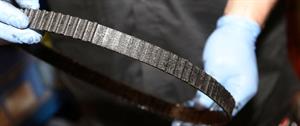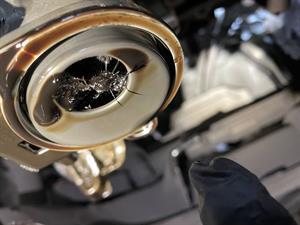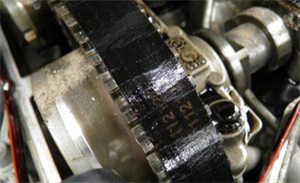Engine wet timing belt replacement (VW, Audi, Peugeot, Citroen, Ford) - What you need to know
Why do Manufacturers Choose Wet Timing (CAM) Belts
Sometimes, even Technicians look under a car's bonnet and wonder why? These wet belts are typical examples of an invention whose
problems are only now becoming apparent.
There are a range of reasons why manufacturers may choose to use a wet timing belt.
- Produce less noise when compared to a chain drive.
- Reduction in friction losses.
- Increase in fuel economy and a reduction in CO2 emissions.
Understanding the Role of Timing Belts
For a long time now car drivers are familiar with timing
belt issues, mainly because of their replacement adds a significant chunk to
servicing bills. And it is quite a large chunk of the cost too.
A Cam belts or timing belts main purpose is to ensure synchronisation between the top and bottom components of an engine, ensuring that the rotating parts (Crankshaft & Camshaft) are timed to avoid piston and valve contact. Historically most of these are 'dry cam
belts', because they are positioned outside of the main engine unit, exposed to the environment and are protected by plastic covers.
How Wet Timing Belts Operate
The wet timing belt system is positioned within the engine and, as the name suggests, is submerged in engine oil.
Due to exposure to engine oil, heat and other environmental factors, wet belts can degrade more so than a standard "dry" cambelt or timing chain. This degradation weakens the belt's integrity and can lead to potential failure, which poses significant risks to engine performance and longevity. A failing/failed wet belt can result in catastrophic engine damage, necessitating costly repairs or even engine replacement. Therefore, running a low oil level, or ignoring service intervals or incorrect servicing can lead to belt failure.
Such belts tend not to snap but their rubber compound deteriorates and contaminates the engine oil and engine internal lubrication system. Even if a weakened belt is still serving its purpose, these rubber remnants can enter the oil pump, causing a loss of oil pressure. Occasionally, but not always, you may get a sporadic oil light come on the dashboard. This can be the first sign of a wet belt fault. Do not ignore the advice of the garage saying that the wet belt needs replacing. It can, if not attended to, cause catastrophic engine failure and, as there are a shortage of engines, could mean your car will be off the road for quite a length of time waiting for a replacement engine.
Maintenance Tips
We check the replacement interval of your wet belt and please note that if you cover fewer than 10,000 miles per year, with most
journeys being shorter than six miles, then it should be replaced sooner than it's recommended interval.
Short journeys do not allow the engine to reach normal/optimal operating temperature and so the engine oil will degrade at a much faster rate, affecting the wet belt.
Here at Wolds View Garage we have invested heavily in the specialist training and tooling required to replace these wet belt systems.
It is a time consuming job that takes a minimum of 2 days. During the repair, if we find other components damaged we will contact you straight away.
We have come across instances of consequential damage caused to turbos and secondary auxiliary engine components as a result of oil starvation.
- ©2025 Wolds View Garage, Pocklington, York YO42 2DG
- Tel: 01759 307770
- Contact us



